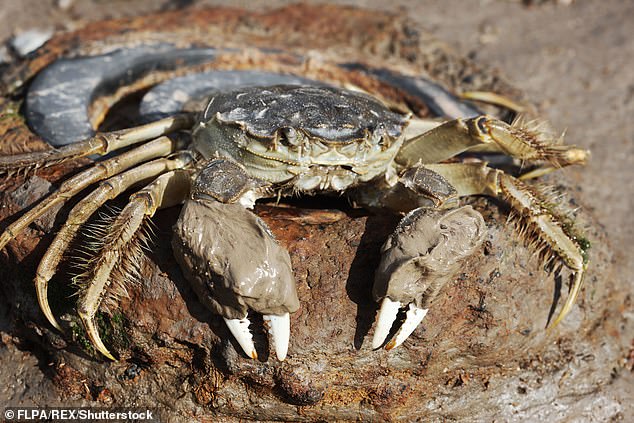An invasive crab from China, known for terrorizing fishermen and blocking power plant cooling systems, is now taking over New York.
The New York Department of Environmental Conservation (NYDEC) recently issued a warning about the ‘mitten crab,’ known for its hairy claws, urging residents to capture the crab, place it in a freezer and call their local officials.
Sightings of the crab have been reported along the Hudson and Nissequogue rivers and in Long Island Sound, following a trend of past invasions in San Francisco, the Chesapeake Bay and even London’s Thames River.
Marine scientists have also expressed concern that the invasive creature could displace many vulnerable local species and disrupt the food web.
“These crabs move between brackish and marine waters,” the conservationists said, “and have the potential to disrupt local ecosystems by competing with native marine life.”
State officials documented sightings of the invasive Chinese crab along the Hudson and Nissequogue rivers and Long Island Sound, following a trend of past invasions in San Francisco, the Chesapeake Bay and even London’s Thames River (as shown in the image above).
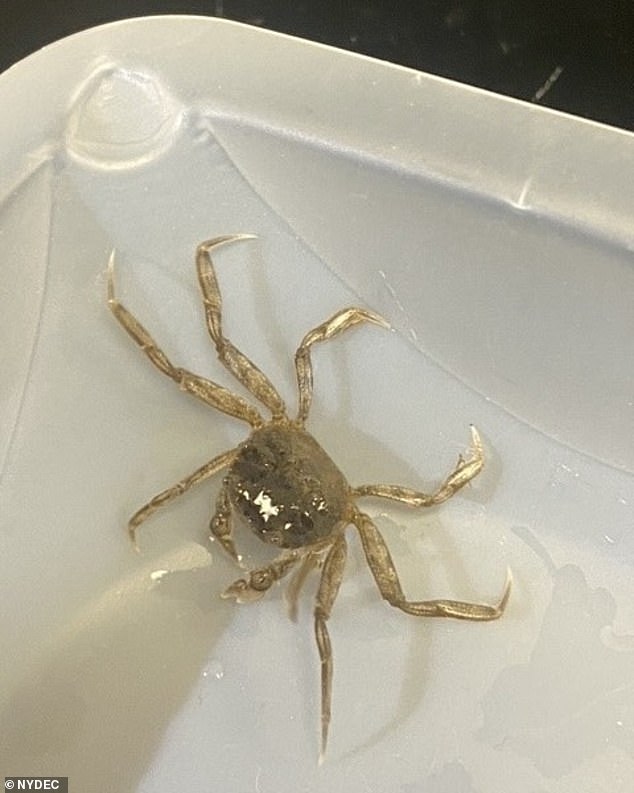
The invasive crab is known to steal fishermen’s bait, damage gear and, worse, block power plant cooling systems, the New York Department of Environmental Conservation said.
NYDEC described the mitten crab (Eriocheir sinensis), which is native to East Asia, as ‘generalist predator‘capable of disrupting entire food webs while ‘foraging for the eggs of native fish and invertebrates.’
The mitten crab’s digging techniques can cause “instability and increased erosion on river banks, which in turn increases the risk of flooding and reduces habitat.”
The light brown to olive-colored Chinese crustaceans start out small and their claws do not develop until adulthood.
The claws have dense patches of brown bristles or ‘mushrooms’, which give mitten crabs their name.
Commercial shrimp trawlers brought the crabs to the United States in 1992, first establishing the population in San Francisco Bay.
And because they are a delicacy in Asia, the creatures have been illegally imported into markets in Los Angeles and San Francisco; The United States does not allow the import, export or sale of live crabs.
The first mitten crab was reported in New York in 2007 when it was found in a commercial crab pot in the Hudson River near the Tappan Zee Bridge.
Conservationists implored the public to look for “a notch in the shell between the eyes and four small lateral spines on each side of the shell as additional identification markers in juvenile crabs.”
The NYDEC told New Yorkers they should be sure to “inspect and remove debris and mud from boats, trailers and equipment” in an effort to spot the crab.
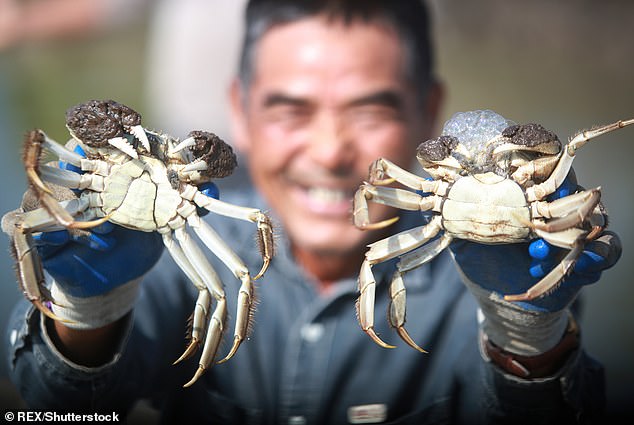
NYDEC described the mitten crab (Eriocheir sinensis) as a ‘generalist predator’ capable of disrupting entire food webs while ‘foraging for eggs of native fish and invertebrates’
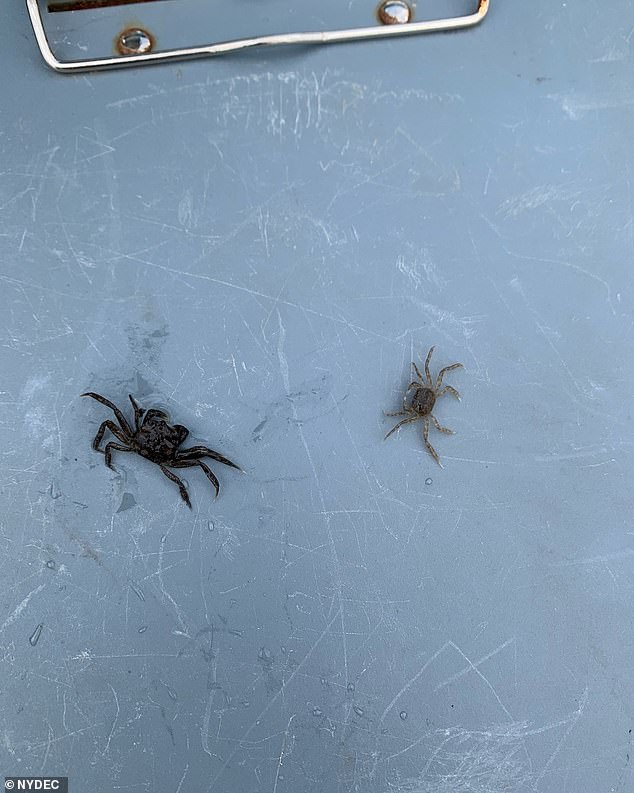
The light brown to olive-colored Chinese crustaceans start out small (above), and the department reported that the dense patches of brown bristles or ‘mushrooms’ on their claws, which give mitten crabs their name, do not develop until adulthood. .
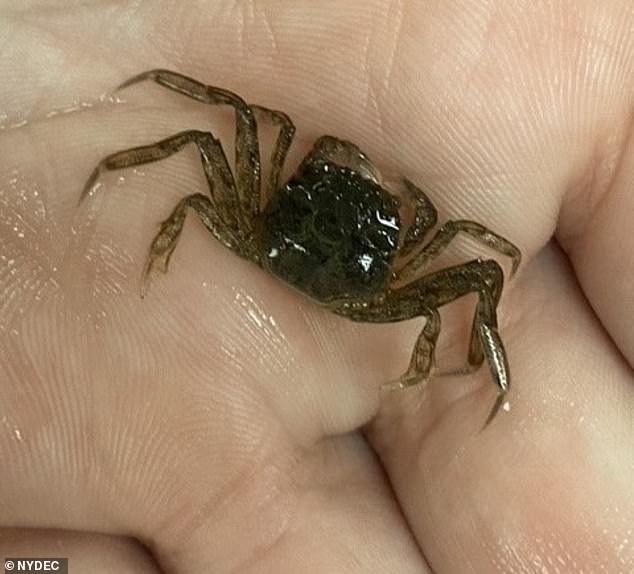
Conservationists implored the public to be on the lookout for “a notch in the shell between the eyes and four small lateral spines on each side of the shell as additional identification markers in juvenile crabs” (as shown in the image above).
State conservation officials advised that if a crab is detected, it should be removed from the environment, photographed and then frozen for later analysis.
“Be sure to take identification photos and note your precise location,” NYDEC said. “Report your sighting to the Office of Invasive Species and Ecosystem Health by emailing: isinfo@dec.ny.gov.”
The department is part of the National Mitten Crab Network, a partnership between several U.S. state, federal and research organizations that has successfully repelled the invasive crab from the West Coast since 2010.
The last confirmed record of a live crab along the East Coast was in Chesapeake Bay, near Maryland’s Patapsco River, in 2014, according to a map maintained by the smithsonian institute.
“Mitten crabs have also been found sporadically in the Great Lakes and the Gulf Coast of the United States,” the institute said, “but a breeding population has not been established in either region.”
NYDEC officials issued a general warning for the department’s facebook page in an effort to slow the spread of potentially dangerous invasive species of any kind.
“Remember, never release any non-native animals or plants into the wild,” department conservationists said.


